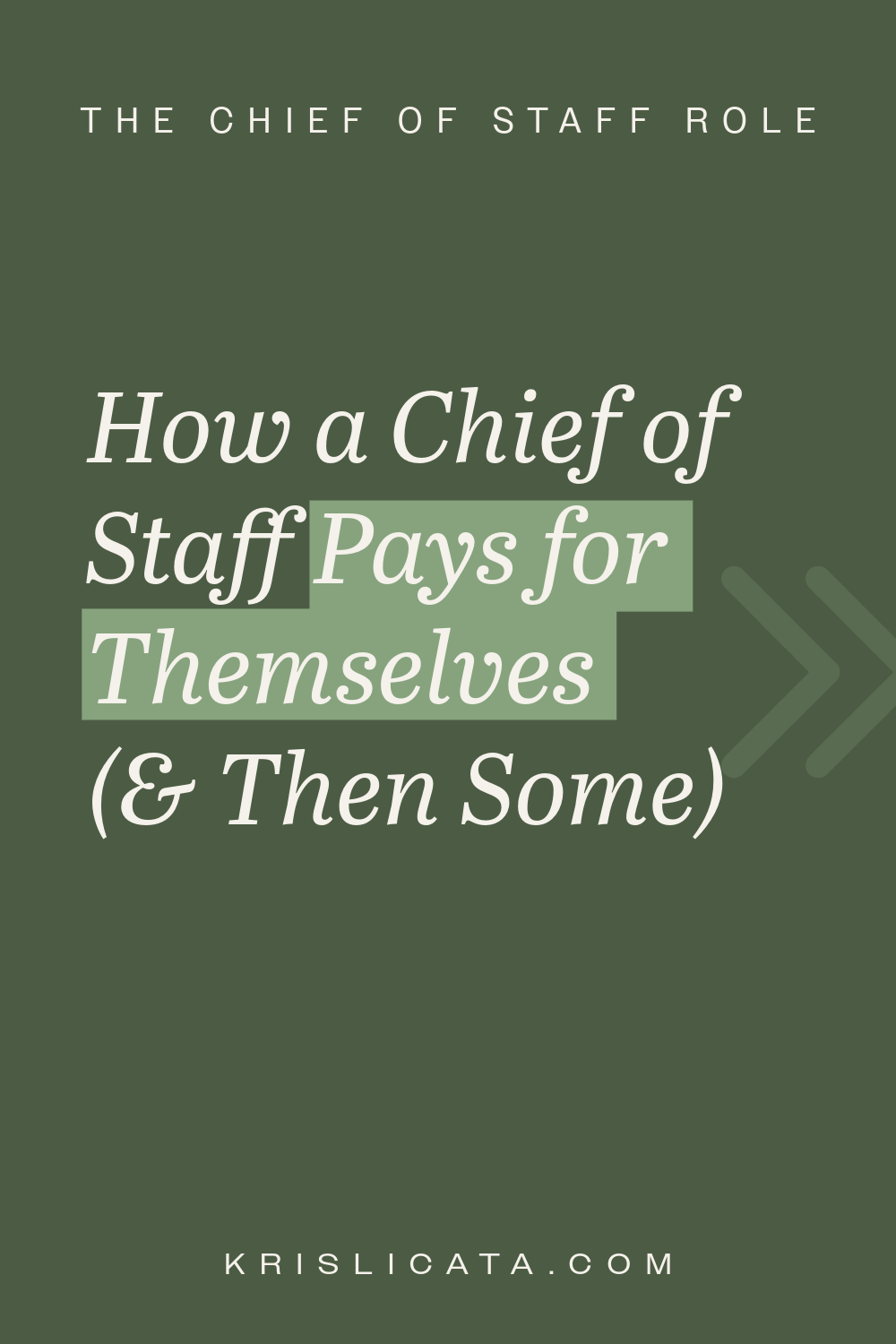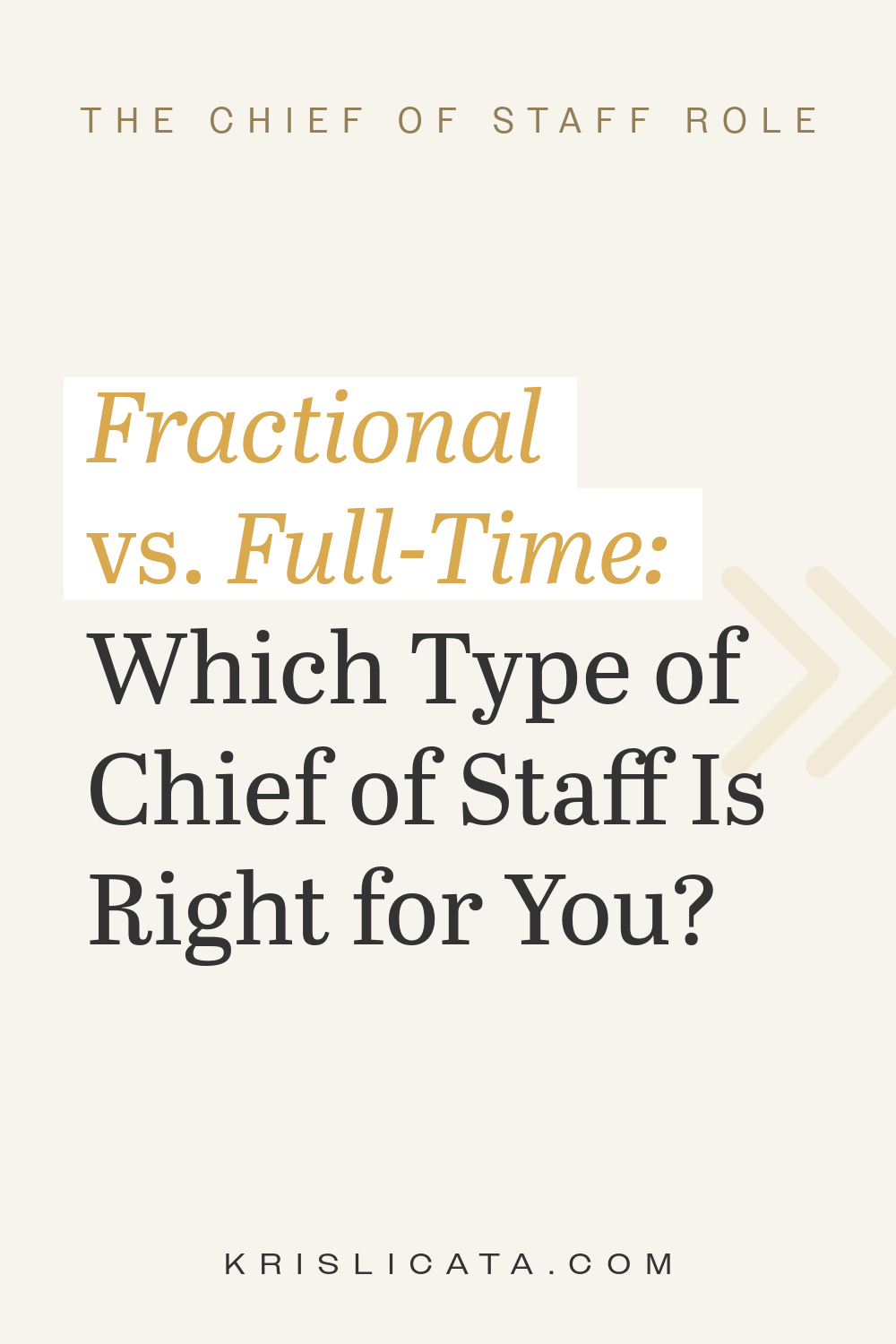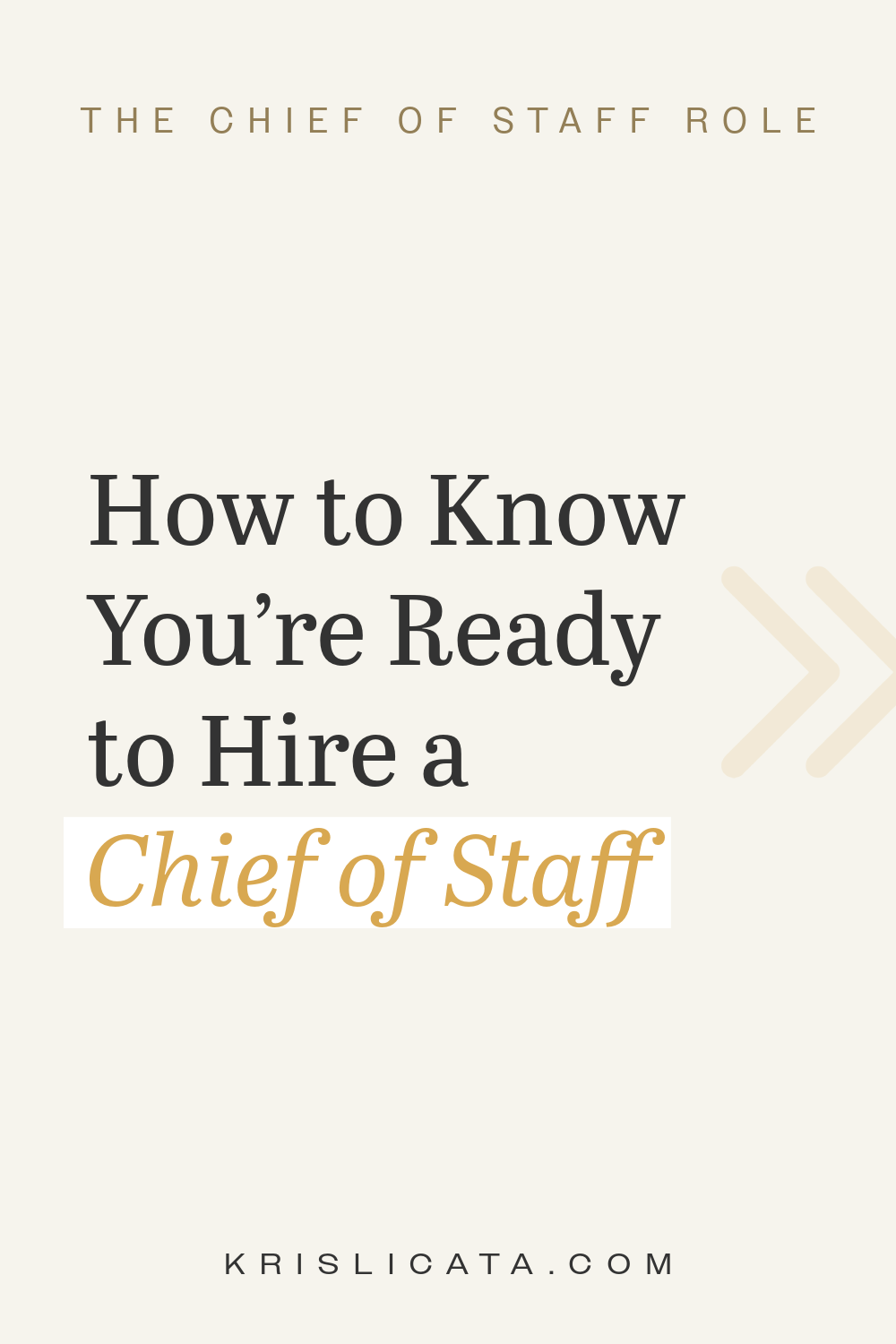Why So Many Chiefs of Staff Fail (and How to Avoid It)
Okay, Let’s Just Admit That It’s Not Always a Success Story
If you’ve ever hired (or tried to hire) a Chief of Staff and it didn’t work, you’re not alone. Leaders often come to me saying things like:
“We thought we needed one, but it never quite clicked.”
“They were great but we weren’t sure how to use them.”
“It just didn’t help us like we hoped.”
It’s probably more common than you think. And it doesn’t mean you made a bad hire. It usually means the role wasn’t set up for success.
Why It Happens: 5 Common Reasons Chiefs of Staff Fail
1. The Role Was Never Clearly Defined
The #1 reason most Chiefs of Staff fail is that nobody agrees on what they’re actually there to do. If the job description reads like “a little bit of everything,” the reality becomes “a lot of nothing.” (Sorry if that hurts but I’ve seen it A LOT.)
Without a clear definition of scope, decision rights, and success metrics, the human in the role drifts and frustration builds on both sides.
How to fix it: Before hiring, get crystal clear on what problem this role solves. Is it coordination? Decision-making? Strategic execution? Build the role around that purpose, not a generic list of skills. Your chief of staff is a problem solver at their core.
2. The Leader Wasn’t Ready to Be Supported
This one’s uncomfortable, but true. A Chief of Staff can only be as effective as the leader allows.
If you’re used to doing everything yourself, trusting someone else with visibility and influence can feel… weird. But without access and openness, your Chief of Staff becomes an expensive project manager (and not a true thought partner).
How to fix it: Build trust early. Invite them into your thinking, not just your tasks. They can’t connect dots they can’t see.
3. They Hired for Skill, Not Fit
On paper, the hire looked perfect: sharp, organized, high-achieving. But in practice, something didn’t click. That’s because success in this role isn’t about intelligence or résumé lines. It’s about alignment.
The right Chief of Staff thrives in the same type of environment you lead in. A fast-moving founder needs someone who can bring order to chaos without slowing the energy. A corporate executive might need someone skilled in navigating politics, influence, and structure.
It’s also about leadership chemistry. The best Chief of Staff complements your strengths, balances your blind spots, and works naturally within your “zone of genius.”
If you’re visionary and future-focused, you need someone grounded in follow-through. If you’re detail-driven, you may need someone who helps you zoom out and prioritize.
How to fix it: Hire for chemistry and context, not just credentials. Look for someone who fits how you think and lead, not just someone who looks good on LinkedIn.
4. They Were Treated Like an Assistant (or a COO)
A Chief of Staff isn’t an Executive Assistant and they’re not your mini-COO either. They sit in the space between those roles, bridging vision and execution.
When the role slides too far one way (too tactical) or the other (too in-the-weeds operationally heavy), it breaks. They lose credibility or capacity, and everyone loses momentum.
How to fix it: Clarify the relationship between your CoS, EA, and COO. Each can be powerful when they work together and avoid overlap.
5. The Organization Wasn’t Ready for the Leverage
Sometimes the role fails not because of the person, but because of the environment. If your culture rewards busyness over alignment, or resists accountability and change, your Chief of Staff becomes a translator no one listens to.
How to fix it: Create space for change. Empower your CoS to influence processes, priorities, and communication, not just take notes.
What Success Actually Looks Like
When it works, it’s magic! You have someone who sometimes knows what you’re thinking before you say it, who can challenge you privately and champion you publicly, and who creates results where chaos used to live.
You spend more time on what matters — strategy, culture, vision — and less time re-explaining, re-deciding, and redoing.
That’s the power of a well-structured Chief of Staff partnership.
How to Get It Right This Time
Start with clarity. Define outcomes, not just responsibilities.
Hire for chemistry. The best fit feels natural.
Co-create the playbook. Build your rhythm together — how you meet, make decisions, and move priorities.
Review + refine. Check in quarterly. What’s working? What needs realignment?
Consider fractional first. A short-term engagement helps you test the model without the risk of a full-time hire.
Final Thought
A failed Chief of Staff experience doesn’t mean the role isn’t right for you. It just means the setup wasn’t right yet. When designed intentionally, it’s one of the most transformative relationships a leader can have.
Ready to Get It Right This Time?
Whenever You’re Ready, Here Are 3 Ways We Can Work Together:
Follow Me on LinkedIn. For insights on leadership, clarity, and getting the most out of the Chief of Staff role. Follow along for quick hits and real talk about making work work.
Hire Me as Your Chief of Staff. Not sure if you need a Chief of Staff? Let’s talk it through. Book a quick discovery call to find the right fit for where you’re headed.
Collaborate With Me. Work with ambitious leaders, too? Let’s dream up a win-win: podcasts, panels, trainings, or creative partnerships that help more people lead well and live well.














